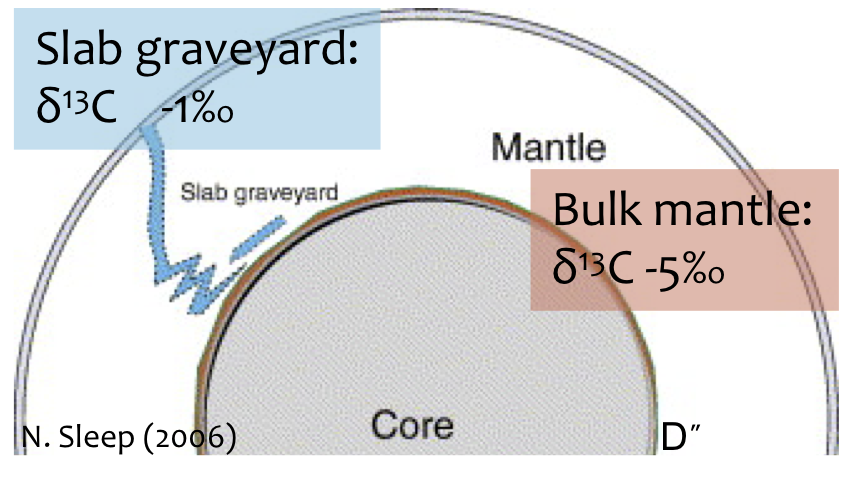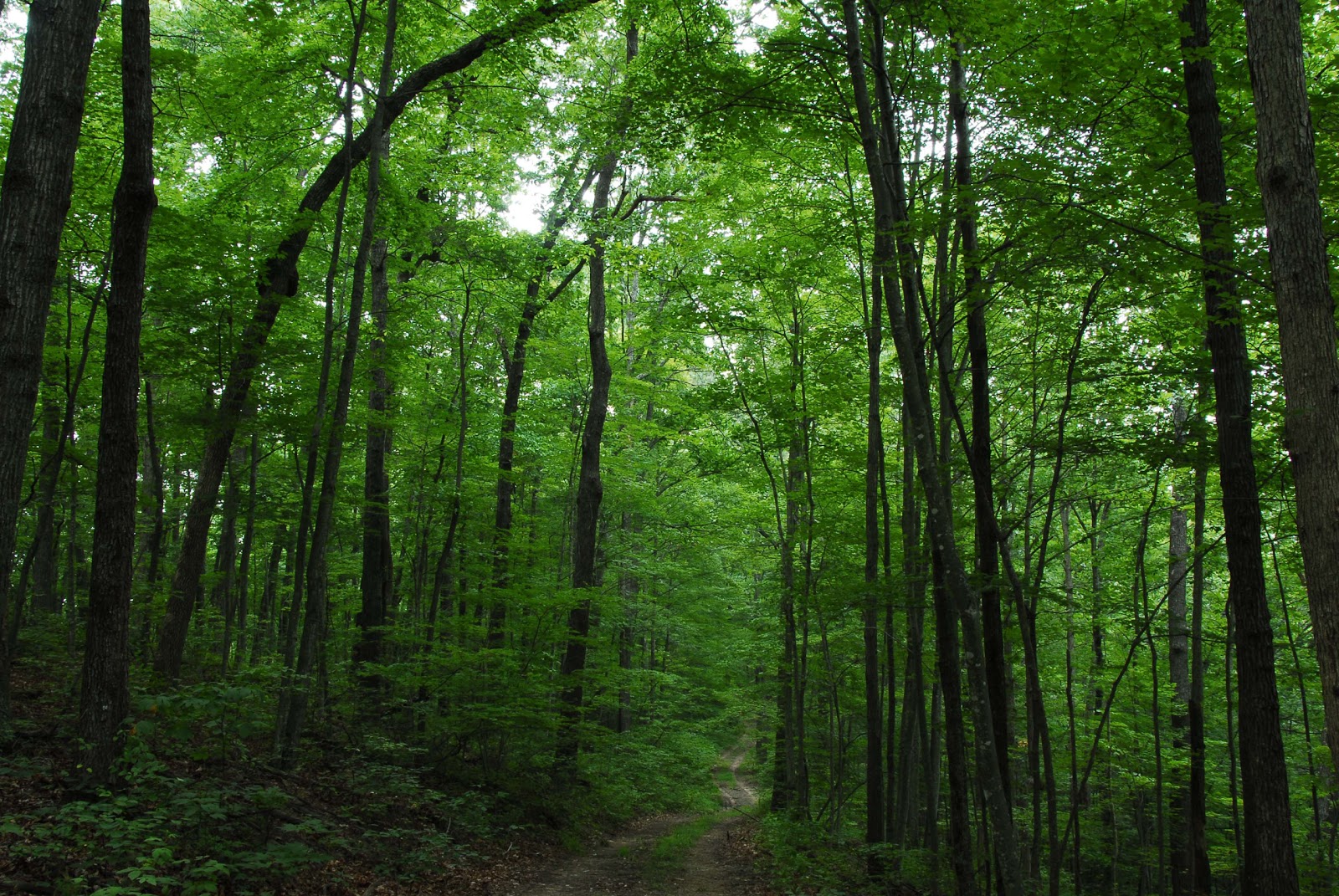Though the total carbon content of the mantle is largely unknown, the isotopic signatures of its sources and sinks suggests much about how the mantle operates. Together, geochemical and mineralogical analyses of a new diamond, a compendium of studies of the magnitude of carbon fluxes into and out of the mantle, and a simple geophysical model suggest that the mantle acts as two interacting reservoirs of carbon: (1) subducting slabs (the reservoir for depleted carbon) descend deep into (2) the bulk mantle (the enriched-carbon reservoir) to possibly as deep as the core-mantle boundary. These reservoirs mix to a small degree; that degree is a function of the isotopic composition of the bulk mantle (δ13C from -8 to -3.5 parts per thousand) and the residence time of carbon in the mantle (1-10 Gyr). The residence time is a function of the net flux out of the mantle, which is itself a sum of seafloor spreading rates, oceanic sediment deposition rates, calcium carbonate precipitation rates, and arc volcanism fluxes. This paper summarizes many studies of these fluxes to estimate those above quantities relevant to mantle convection.

The isotopic fractionation of carbon by biological processes also has wide-reaching implications. Geological evidence shows that the fractionation has been quite constant over the age of the Earth, yet the mismatch between the δ13C of the bulk mantle and of subducting sediment suggest that subducting slabs descend to a largely separate reservoir. The δ13C of diamonds suggest that this reservoir is deeper than the transition zone, and may even be at the core-mantle boundary. Thus, analysis centered on the relatively inaccessible carbon content of the mantle could provide evidence for full- rather than layered-mantle convection, one of the largest questions in geophysics.

Photo by Meacham Wood, tartanscot.blogspot.com
